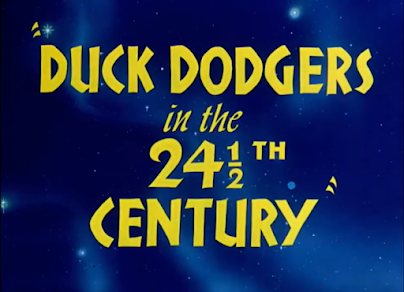Cartoon storytelling, part two: "The Unbearable Bear"
The Unbearable Bear (Schlesinger/Warner Bros., 1943), directed by Chuck Jones
Here's the scenario.
A cock-er-ney rogue of a fox is trying to rob a bear couple's house. Mr Bear, a "bloomin' copper", is out, while Mrs Bear complains about him in her sleep.
One by one, more characters will join the story, changing the scenario and sometimes altering the dynamics of the other characters, keeping the cartoon fresh and entertaining.
First, a talkative little mouse named Sniffles, who catches the burglar trying to crack a safe. To stop him from alerting Mrs Bear, the fox convinces him that he's Robin Hood, stealing from the rich to give to the poor. (Sniffles gets in a great bit of bad logic here: "If you say you're Robin Hood then you must be Robin Hood, 'cause Robin Hood wouldn't tell a lie!")
So here's the new scenario. The fox is trying to rob the house without waking Mrs Bear. Although Sniffles is on his side, he's still making too much noise for the fox's comfort (including turning on a radio at full volume, believing it to be another safe) and eventually he just ties the little guy up.
No sooner has the situation returned to its pre-Sniffles state, than, Mr Bear - Officer Bear - staggers home drunk after a night on the town.
New scenario: the fox's main concern is staying hidden, as Officer Bear stumbles around the house, getting changed into his night-clothes and noticing the fox but, in his drunken state, not registering that he's an intruder. This scenario doesn't last long, as the bear quickly sobers up and holds the fox at gunpoint.
(Notice that before Mr Bear enters, the walls in the house were primarily blue. Now they're primarily red. Background designer John McGrew told animation historian Michael Barrier that he liked to match the background colours to the "intensity of the action". This is obvious in a cartoon like "Case of the Missing Hare", where the colours visibly change on screen, sometimes in rapid succession. He seems to have employed a more subtle version of the same technique here.)
Now, about half way through the cartoon, the cast has fully assembled, as Mrs Bear makes her official entrance, sleepwalking out of the bedroom and around the house. There follows a great couple of scenes, where he-bear and fox, on opposite sides of the law, now have a common purpose: they both know they're in trouble if Mrs Bear wakes up. Sniffles re-enters the story ("Why did you tie me up in all those ropes for? I had an awful time getting out from all those ropes."), determined to protect his hero. Chuck Jones demonstrates his excellent comic timing as Officer Bear and the fox stop him from shooting - and waking - Mrs Bear with a bow and arrow.
With the four characters established, with their relationships to each other and their conflicting goals, the rest of the cartoon follows this scenario:
1) The fox's main aim is to escape from Officer Bear. It would have been fun to see him trying to steal a few candlesticks or something and hide them about his person, but he seems to have given up his plan to burgle the house. At least he still has Sniffles around to remind him of his heroic purpose.
2) Sniffles, still believing the fox is Robin Hood, provides assistance to him and attacks on his pursuer, Officer Bear.
3) Officer Bear tries to catch the fleeing fox and evade Sniffles' attacks without waking - or injuring - Mrs Bear.
4) As established at the beginning, Mrs Bear is resolved to clobber her husband (with a rolling pin, obviously) when she wakes up, but even asleep she takes an active role in the cartoon's events, as her nocturnal activities include washing the fox and hanging him up to dry, and dropping her husband on the floor like a rug.











I just got the Mouse Chronicles DVD for Christmas. I like Sniffles; he was really influential all my cute drawing style (witness: https://buddyscartoons.blogspot.com/2022/12/how-about-charles-solomons-enchanted.html). The funny Sniffles is better!
ReplyDelete